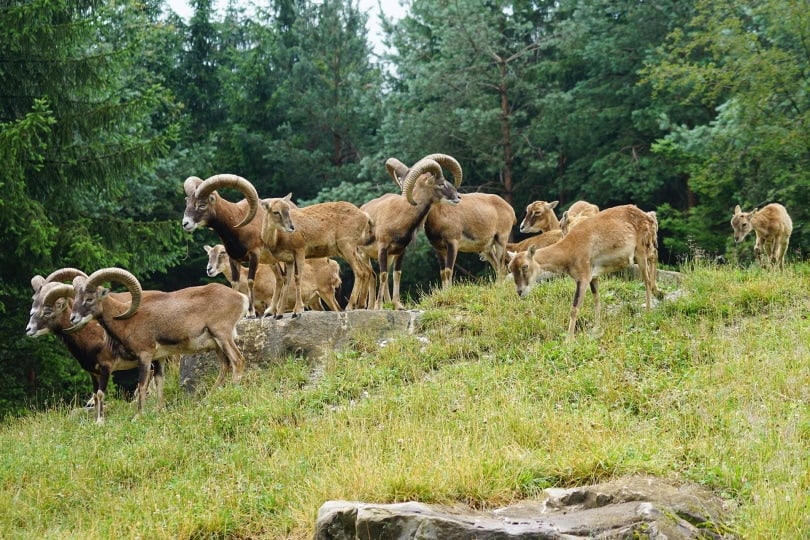While we are all familiar with the sheep we see depicted in farms, we forget that their wild ancestors continue to roam free worldwide. Sheep can be found in the wild on many continents and in almost every environment!

The 5 Places Where Wild Sheep Are Found
1. North America
One of the most prominent wild sheep populations in North America is the Desert Bighorn Sheep population spanning from California to Texas. These sheep can even be found in Death Valley! There are also Bighorn Sheep living in the Rocky Mountains, British Columbia, and Alberta.
Dall Sheep, a Thinhorn Sheep, lives in Alaska, the Yukon, and British Columbia. The most noticeable feature of the Dall Sheep is their nearly all-white wool. Their horns also flare outward away from the face, unlike bighorn sheep whose horns stay close to the head.
Stone Sheep are a subspecies of the Dall Sheep that did not retain the striking white coat. Stone Sheep come in many colors, including charcoal, grey, and “salt-and-pepper.” The Stone Sheep usually has a white patch near their rump and on the backs of the legs.
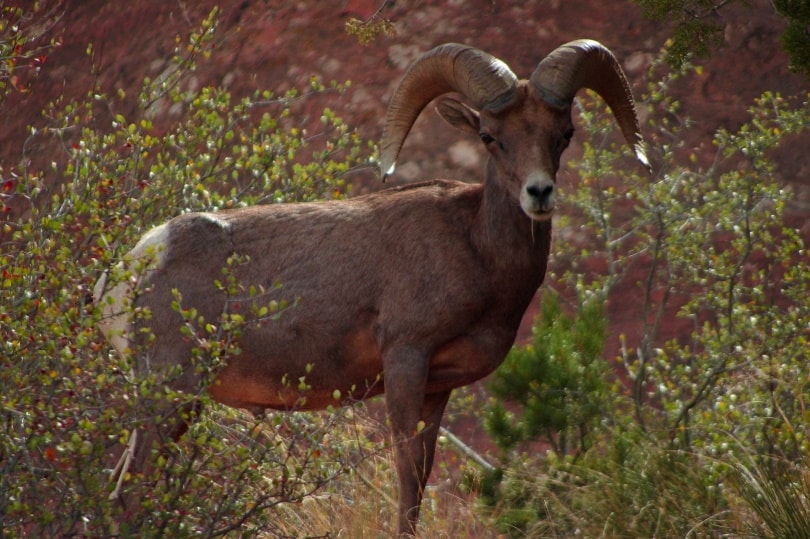
2. Europe
The European mouflon is a feral descendant of the domestic sheep. These sheep were originally only found on the islands of Corsica and Sardinia, but they were introduced to other regions in Europe. They historically lived in open, mountainous areas.
It’s unclear if the European mouflon was overhunted or lost its habitat and became extinct in mainland Europe or was only introduced to areas outside of Corsica and Sardinia in prehistoric times.
Nowadays, they can be found roaming the deciduous and mixed forests of Central Europe. They prefer to live in rocky areas but can survive in the lowlands in the absence of predators. In more humid climates, bowel disease and foot rot can devastate a herd.
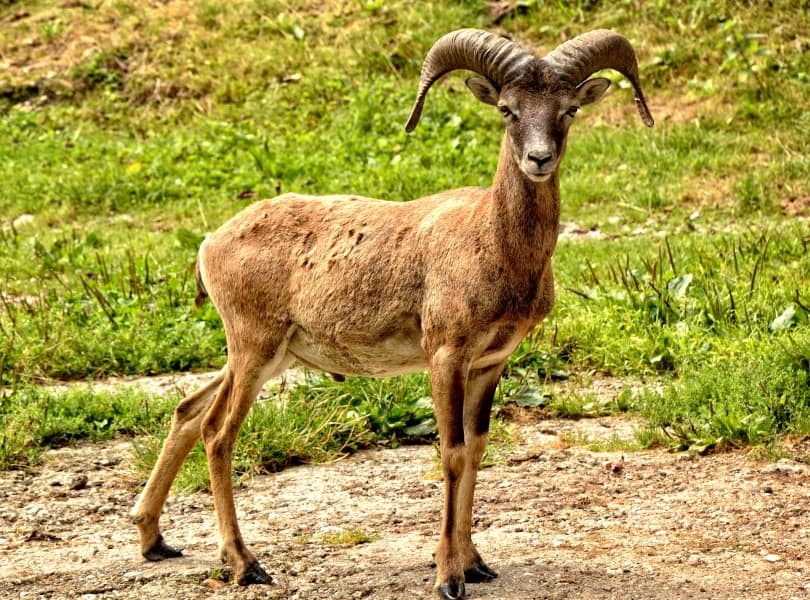
3. The Middle East
A distinct species of mouflon, usually just referred to as the mouflon, lives in the Middle East. The mouflon is another ancestor of our modern domestic sheep and is found in Turkey, Armenia, Azerbaijan, and Iran.
Their genetic ties to the modern domestic sheep were confirmed through analysis of mitochondrial cytochrome gene sequences. In layman’s terms, the DNA of the Mouflon and the domestic sheep share a protein in the cells that are not found in species of sheep like the Bighorn and Argali. The Mouflon and domestic sheep also have the same number of chromosomes with the same set of joined chromosomes, further cementing their genetic relationship.
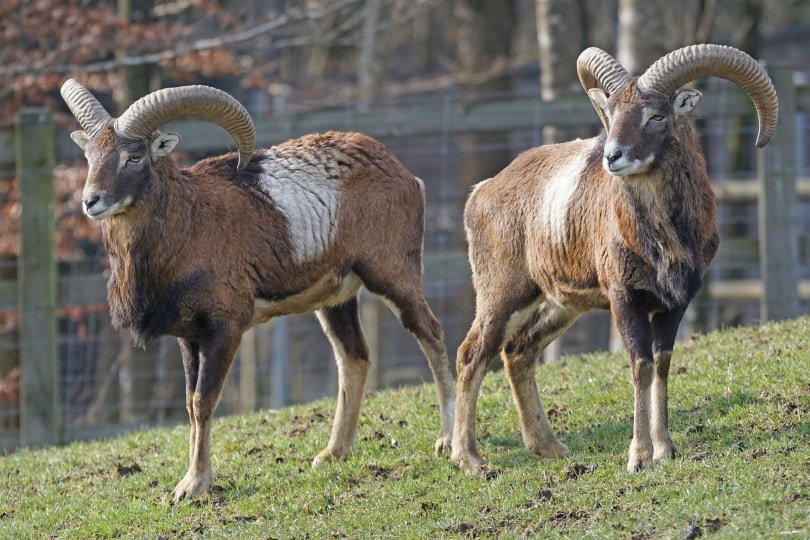
4. Asia
The Argali, or mountain sheep, lives in Asia and can be found in the highlands of East Asia, Tibet, the Himalayas, and the Altai mountains. The word Argali is the Mongolian word meaning “sheep.” There are nine recognized subspecies of Argali. Some sources have tried to classify the Mouflon as a subspecies of the Argali, but DNA evidence shows that they evolved distinctly.
Argali are a near-threatened species. As the largest sheep species in the world, Argali attract many game hunters. Hunting combined with ranching has threatened the Argali’s populations and habitats.
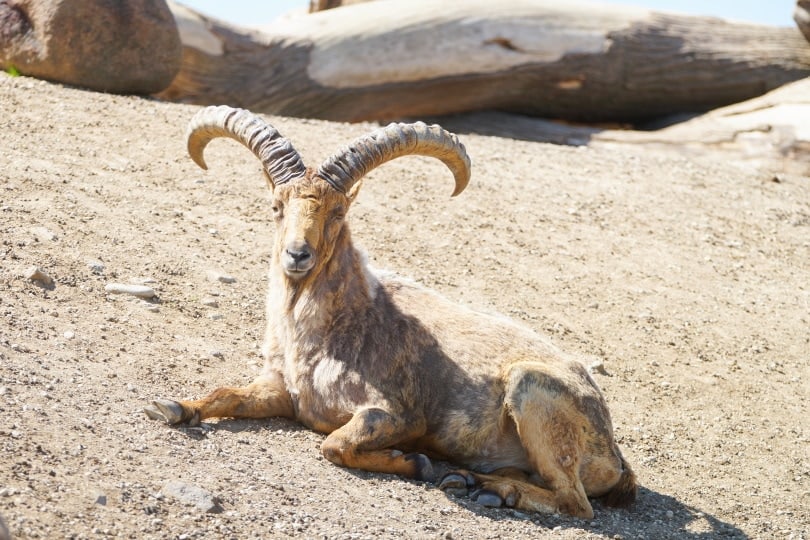
You might also be interested in: 4 Biggest Sheep Myths and Misconceptions
5. New Zealand
Like in Europe, the Arapawa sheep is a feral descendant of the domestic sheep found in New Zealand. This sheep was introduced to Arapaoa Island in New Zealand in 1867, where they have remained isolated from predators. They are now bred primarily for wool.


Final Thoughts
Wild sheep exist throughout most of the Northern Hemisphere. It makes sense; the domestic sheep we raise for wool had to come from somewhere. However, unlike some domestic animals, their wild ancestors still roam in their natural habitats. Many wild sheep populations are threatened by hunting and farming; they need our help and protection to repopulate and avoid extinction!
Featured Image Credit: Pixabay
